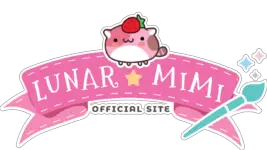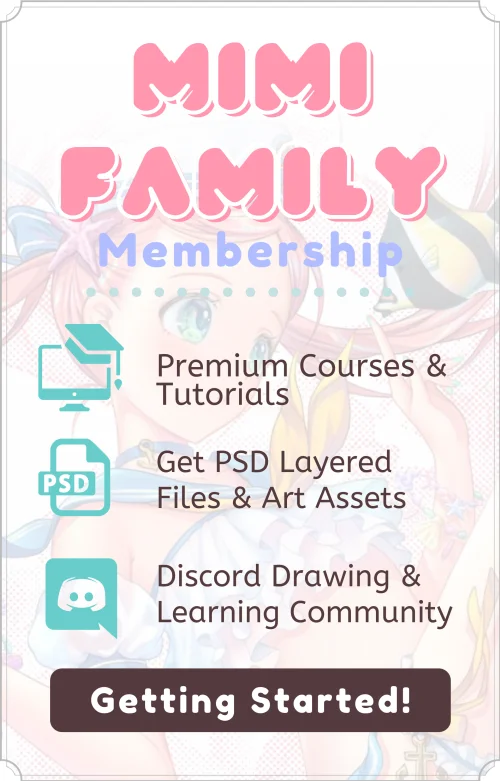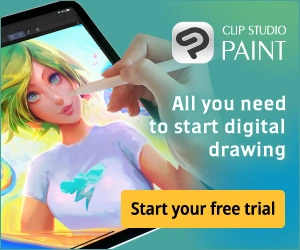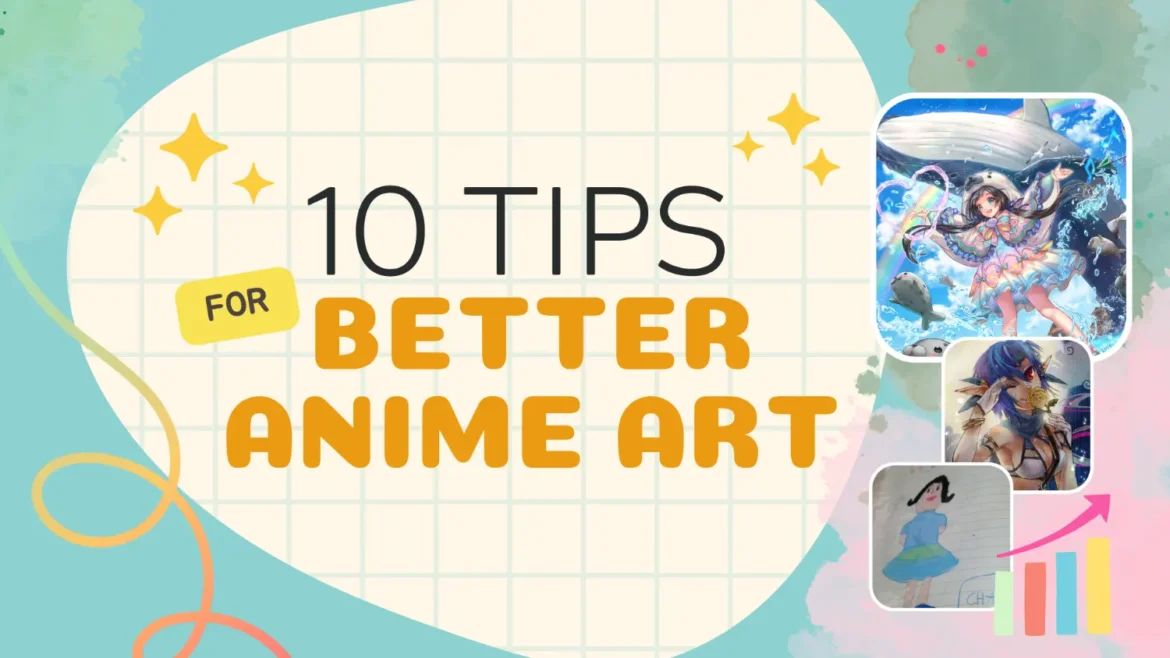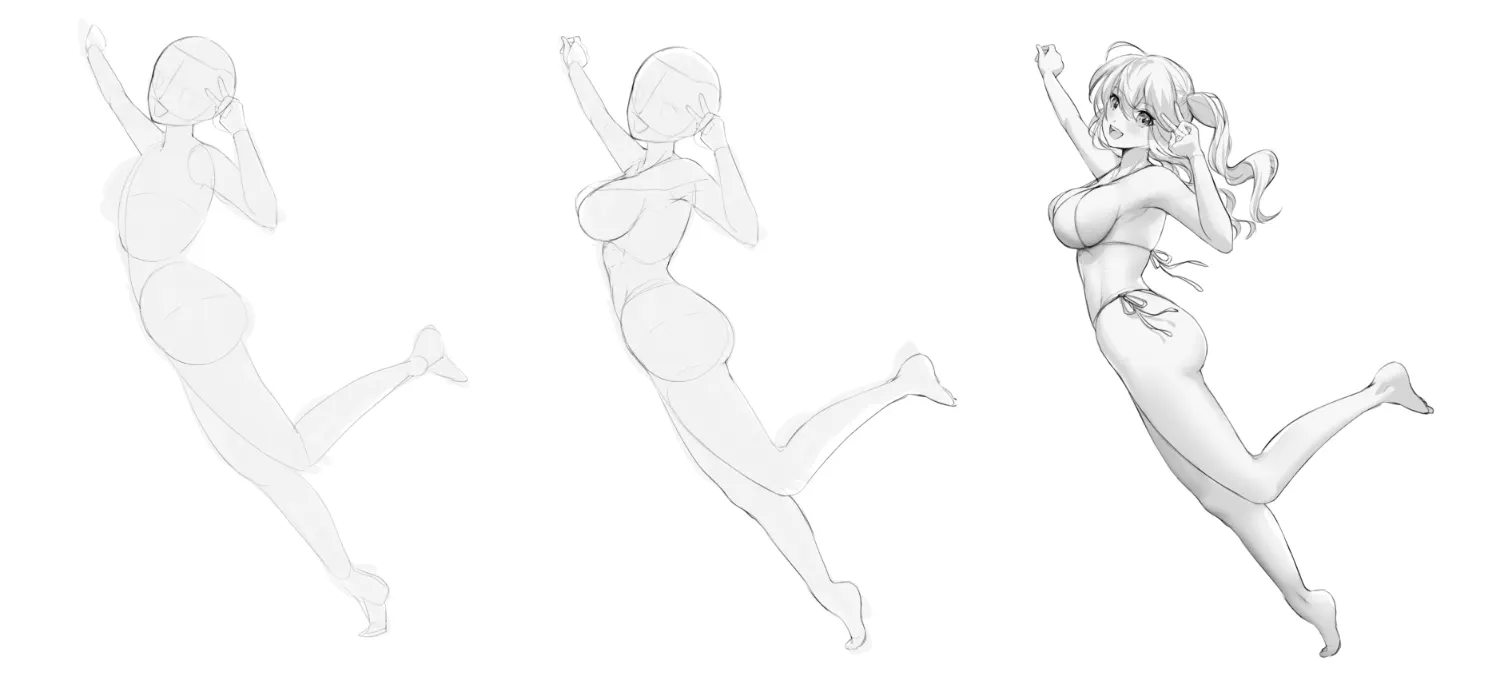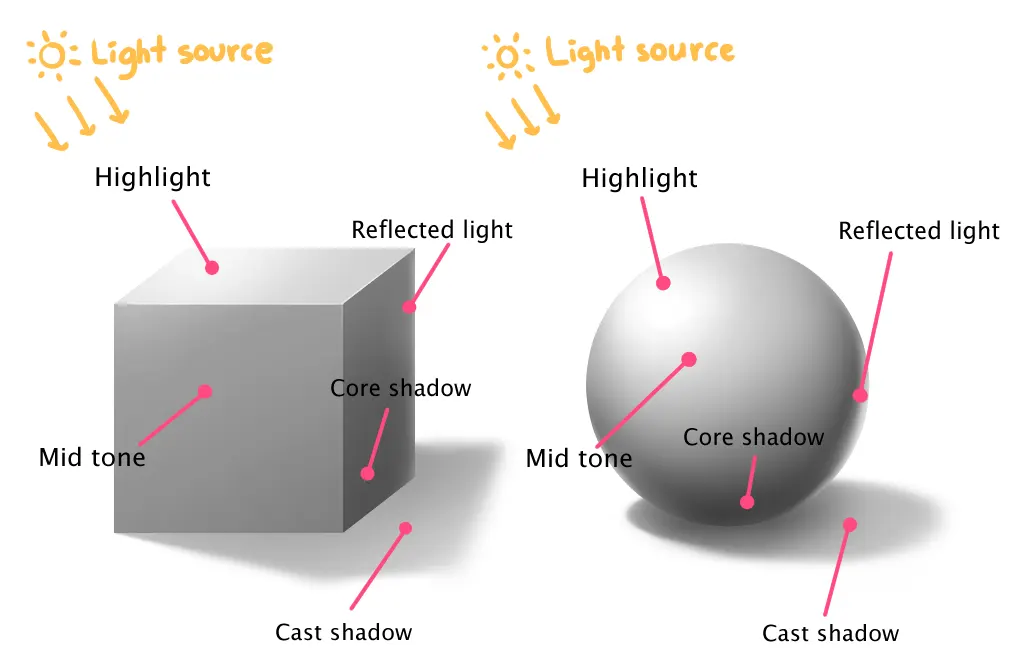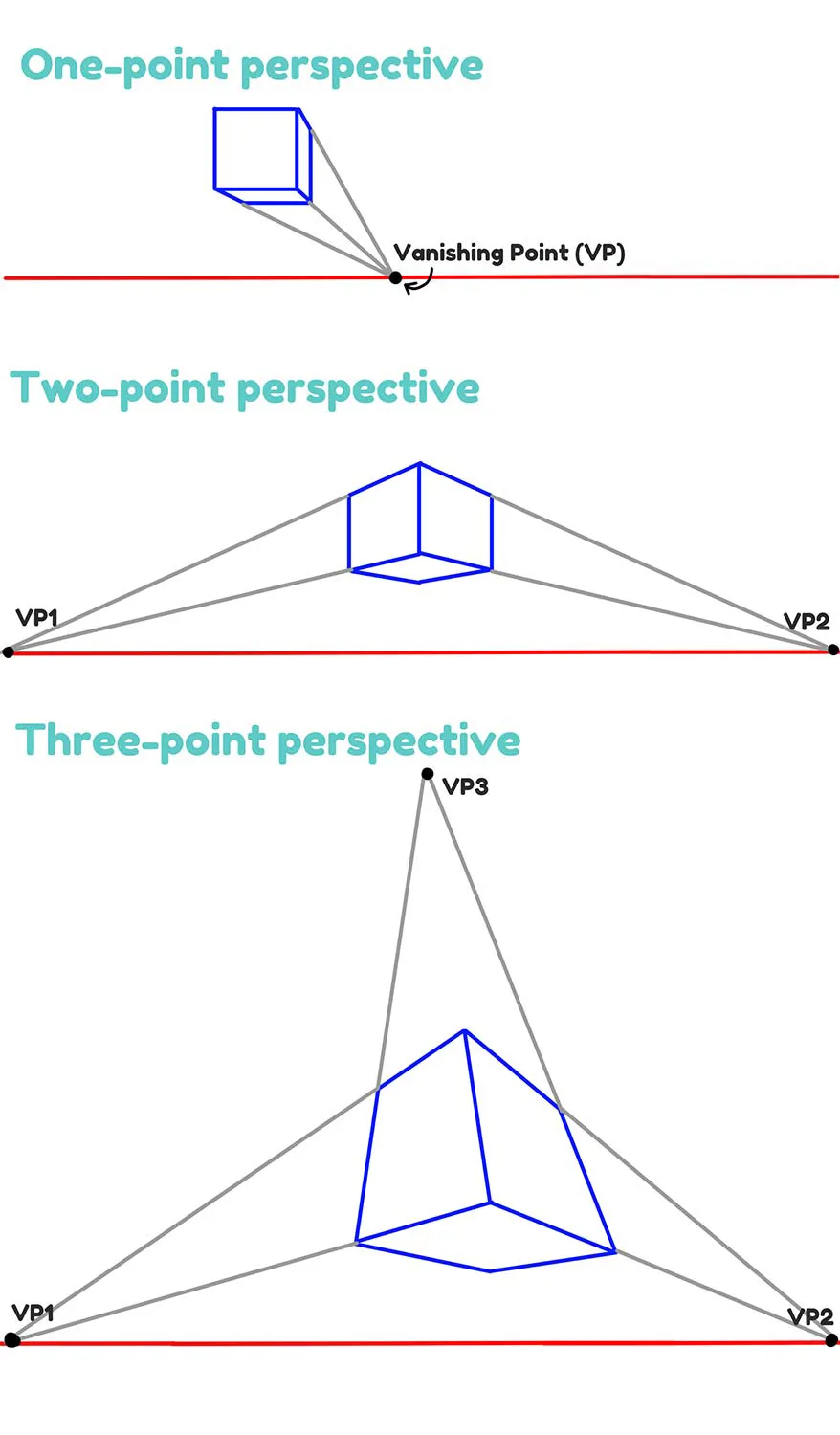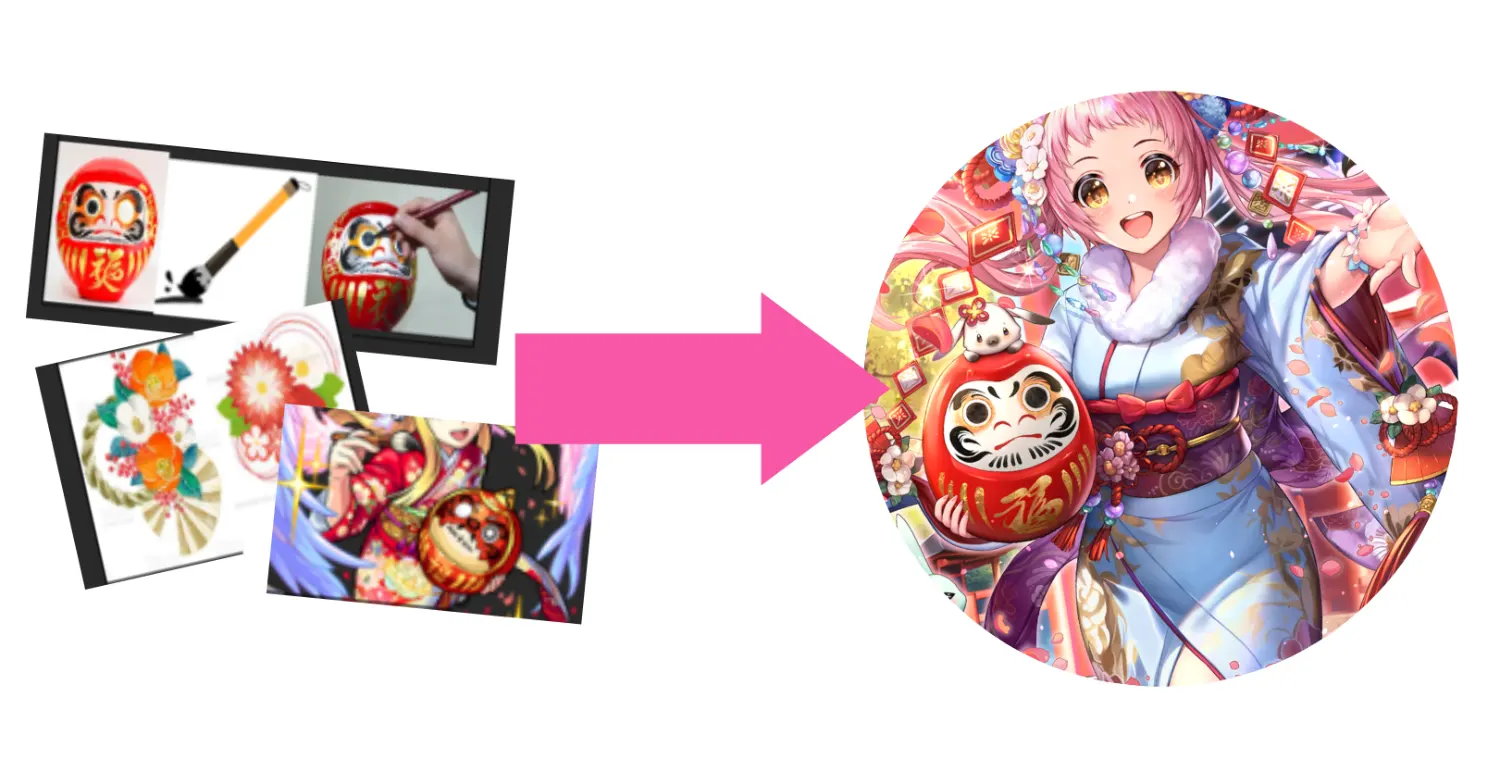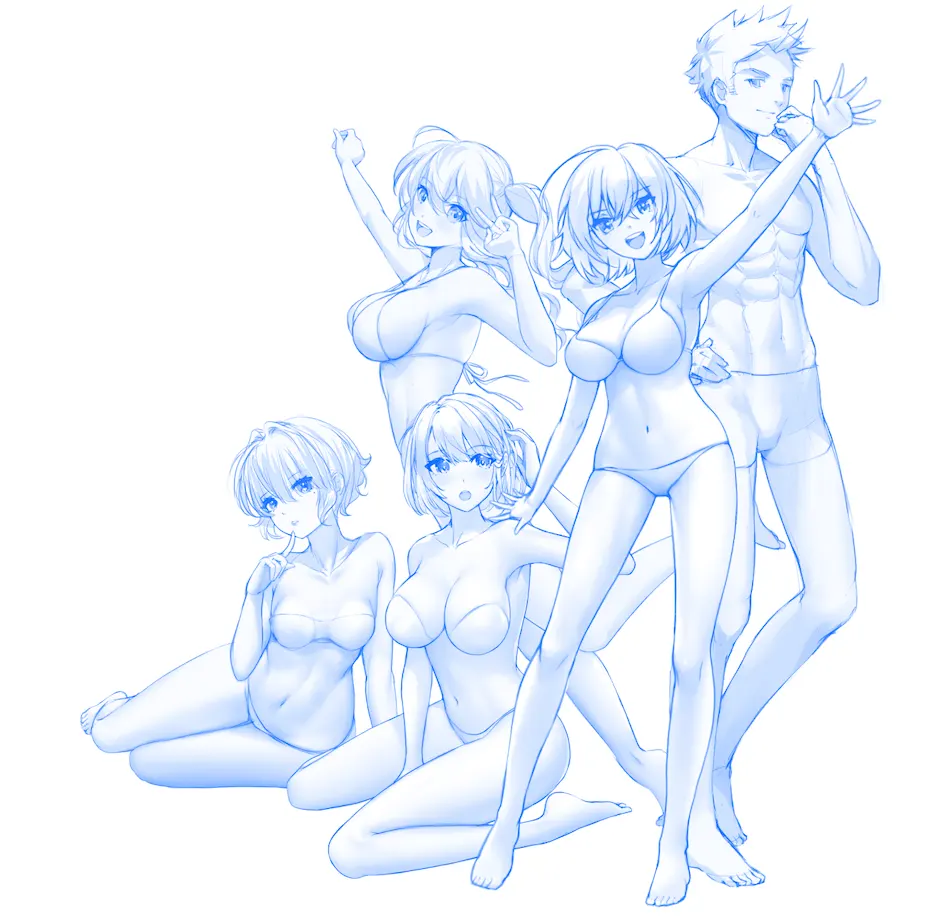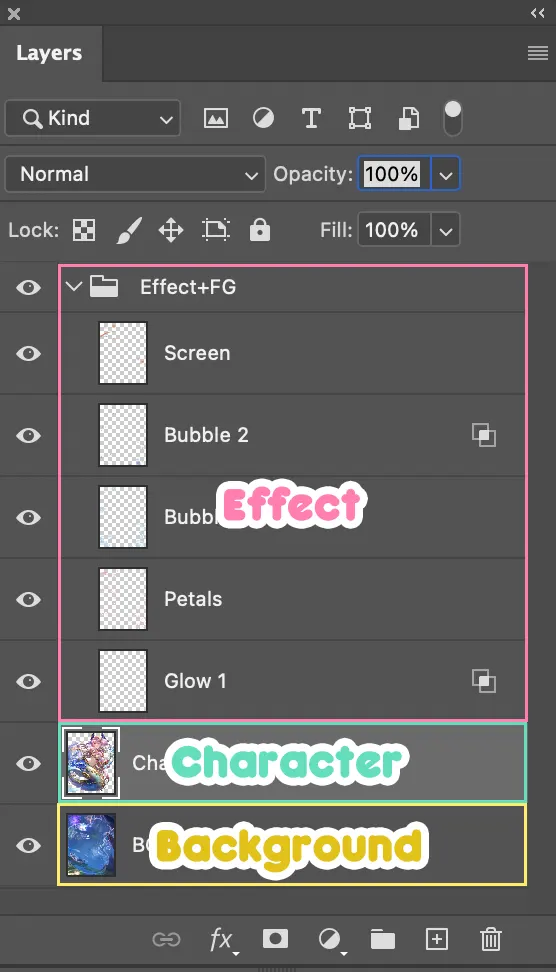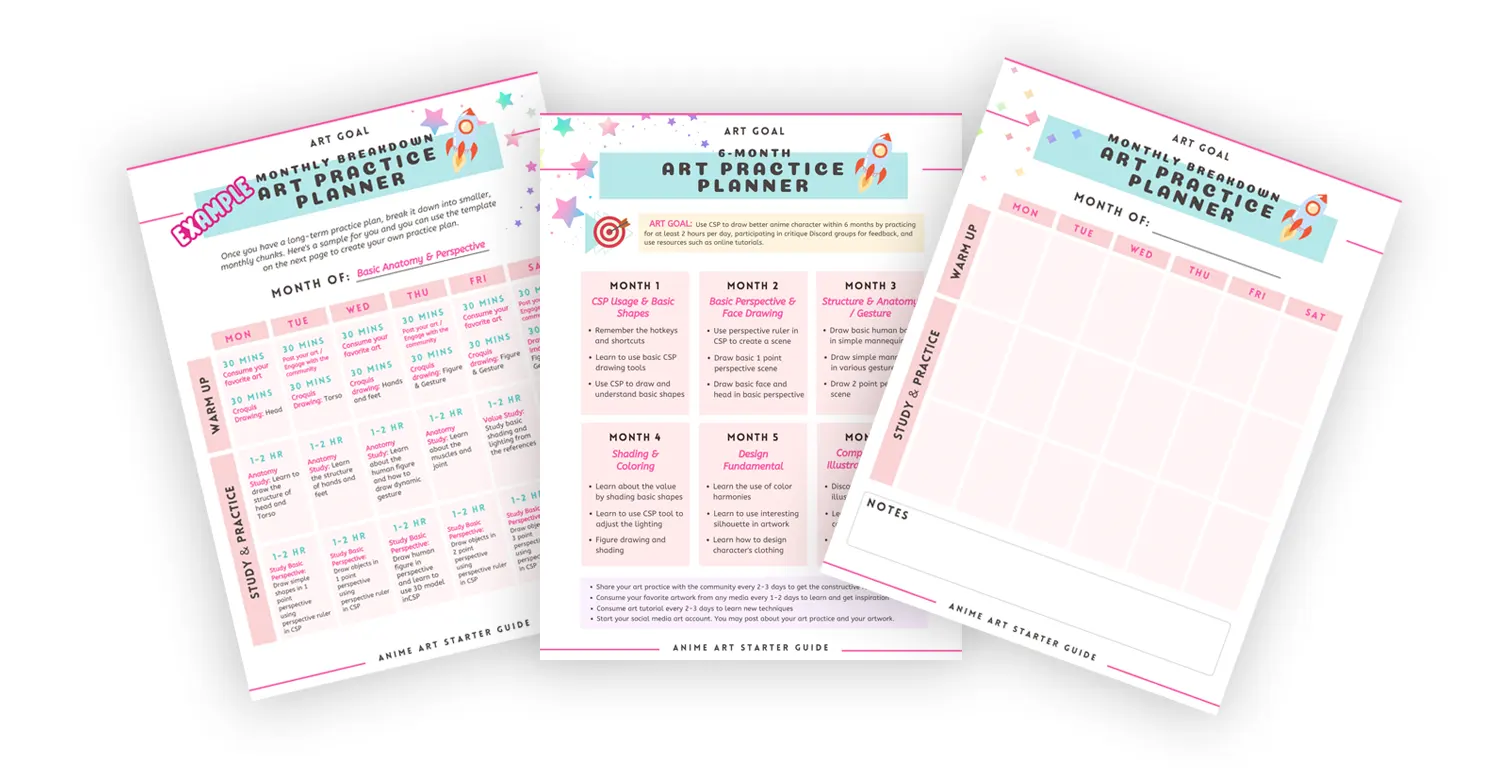Are you looking to improve your anime and manga style artwork? Or maybe you're getting discouraged by all the things you need to learn and practice?
I know how you feel. When I first began my art journey, I struggled to see the big picture of all the things. It was so hard to practice drawing and improve because I didn't know where to start or what steps to take. I just kept drawing mindlessly without a plan. But you don't have to go through the same struggles!
In this post, I'm sharing 10 expert tips to help you level up your art skills. These tips are straight from my experiences as an artist, and I promise you, there's no fluff. It's just actionable advice to take your anime art to the next level and you'll be able to draw with confident in no time. So, let's dive in and start your journey to bringing your artistic vision to life!

#1 Start drawing with basic shapes and proportions
This will help you get the structure of your characters and scenes down before adding in the details. By starting with basic shapes and forms, such as circles and cylinders, you can create a solid foundation for your drawings and ensure that the proportions are accurate. This will make your characters look more cohesive and believable, and make it easier to add in the details and finishing touches later on.

#2 Paying attention to lighting and shadows
Lighting and shading can have a big impact on the mood and atmosphere of your drawings. By observing how light falls on objects and using shading techniques, you can add depth and dimension to your artwork.
In anime art, color and shading can also be used to express emotion and reinforce the character's personality. By paying attention to these elements, you can create more dynamic and expressive artwork that connects with your audience on a deeper level.

#3 You can get better by learning the basics of perspective
When you start to draw something, one of the important thing is perspective. It's one of the fundamentals of drawing!
Learning about perspective in art is like giving your flat drawings a 3D boost.
It makes your characters, objects, and backgrounds seem deeper, like they're popping out of the paper!
Imagine you're drawing a room or a building. Perspective helps with that. It's all about making everything look like it's coming together at one far-away point. This trick makes your art seem like it has more depth and is more interesting to look at.

#4 Learn how to draw different art styles
There are so many styles within the world of anime, from traditional cel-shaded looks to more semi-realistic art style. Don't be afraid to try out different styles to find the one that works best for you.
Trying out different art styles will help you find your own unique voice as an artist. It will also make you a more versatile artist, able to adapt to a wide range of projects and challenges. Whether you prefer traditional cel-shaded looks or more realistic depictions, don't be afraid to try out different approaches and find the style that feels most authentic to you.

#5 Use reference materials
It's totally okay to use reference materials like photographs or character designs to help you get the proportions and details right in your drawings.
Some people might think that using references is cheating, similar to using 3D models or using a reference from AI-generated images. But in my opinion, this mindset can hold you back from a great opportunity for improvement.
Using references can give you new ideas and perspectives, and can help you to see things you may have missed on your own. It's a way to learn from others and to challenge your own understanding of art. Just be sure to use them as a guide rather than copying them directly.
In the upcoming MiMi Family art membership that I'll be launching this June, I'll also be including a workshop specifically focused on how to use references effectively. This way, members will have the opportunity to learn from me about how to use references to improve their artwork.

#6 Be open to criticism
Receiving feedback on your art can be tough, but it's an essential part of the learning process. Try to be open to criticism and use it as an opportunity to improve and grow as an artist.
Don't take negative feedback personally, and try to see it as a chance to learn and become better. It's also a good idea to seek out feedback from a variety of sources, including other artists and art educators, to get a well-rounded perspective on your work.
When I was working at an art company, we would often give feedback on each other's artwork. It was incredibly helpful in improving the quality of our art.
Sometimes, when I was too focused on a piece, I would miss certain details or mistakes, but getting feedback from my colleagues helped me to see things in a new light and make necessary adjustments.


#7 Learn anatomy
Understanding the structure and musculature of the human body can help you create more realistic and dynamic anime characters. Consider taking an anatomy course or studying reference materials to improve your understanding of how the body works. This will not only help you create more accurate drawings, but it will also give you a deeper understanding of how to create movement and express emotion through your characters.

#8 Experiment with different materials
There are so many art materials you can use to create anime artwork not only digital art but solo colored pencils, pens, markers, and so on! Don't be afraid to try out different materials to find the ones that work best for you.
Try out new materials will also help getting you out of the art block and be the beginning of your new art style!

#9 Organize the layers properly
If you're working digitally, using layers can help you separate different elements of your drawing and make it easier to make changes. But it's important to keep your layers organized so you can easily find and work with the ones you need. Try using naming conventions and color coding to keep your layers neat and organized.

#10 Build a solid plan for your anime art learning and practicing
To improve your skills and reach your goals as an artist, it's important to have a plan in place for learning and practicing. This might involve setting aside dedicated time for art every day or a week, finding reference materials and tutorials to help you learn new techniques, and seeking out feedback and guidance from experienced artists.
By building a structured and consistent plan for your art learning and practice, you'll be able to make steady progress and stay motivated on your journey to becoming an anime master.
You may get a copy of the practice schedule I created for beginners in my e-book here. It's totally free!

#11 Join a community
There are tons of online communities for artists, including forums, Discord channels, and social media groups, where you can share your work, get feedback, and learn from other artists. Joining a community can be a great way to stay motivated and improve your skills. Being part of a community of like-minded artists can be a great way to stay motivated and improve your skills.
If you don't know where to start, you may consider joining our MiMi Family Discord art community! The MiMi Family Discord is a great place to connect with other anime artists, share your work, get feedback, and learn from each other. This February, we'll be continuing our anatomy drawing challenge and also hosting a live workshop session. Don't miss this opportunity to improve your skills and learn with the community. Mark the date, and join us!
And if you're really serious about taking your art to the next level, make sure to grab my free ebook “Anime Art Starter Guide with Clip Studio Paint“. With exclusive content I shared in my ebook, it's the perfect way to start planing your anime art journey!

In conclusion, learning to draw anime art can be a challenging but rewarding experience. Don't forget to practice regularly, seek inspiration from other artists, and experiment with different styles and techniques! Don't be afraid to make mistakes, and share your art with the world. I hope these tips helped you take your art to the next level!
Finally, if you like art tips and content like this, feel free to subscribe to my weekly newsletter: !
I share my anime art tips and experiences in my digital art career in a weekly email. You'll get the insight and behind the scene of the art career! Really recommend if you're a beginner anime style artist.
Thank you so much for reading this post! I really appreciate your visiting and using your valuable time reading my content!
Much Love 💖
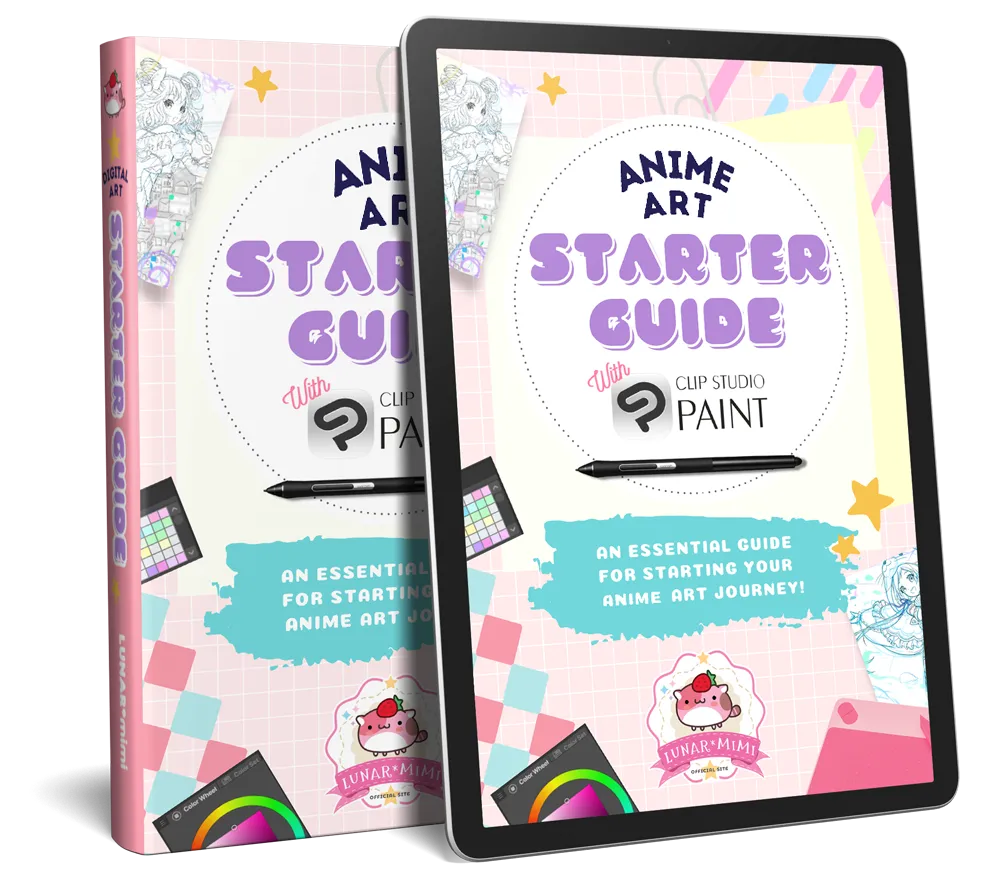
Want to know how to start your anime art journey?
Download my ANIME ART STARTER GUIDE and start your artistic path right away for FREE!
